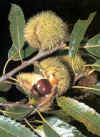
 R
R


 REGOLDO
REGOLDO


|
 R
R
|

|

|
 REGOLDO
REGOLDO
|

|
| castaño castanea sativa |





 REGOLDO
REGOLDO


U.E.P.
 Add to Favorite
Add to Favorite
 Home Page
Home Page
 Recommend this Plant
Recommend this Plant
|

|
|
2008 © HIPERnatural.COM
www.hipernatural.com Your Source of Natural Health in Internet |
|